#livingston matthews
Text
save me men in green dress... save me... men in green dress save me....
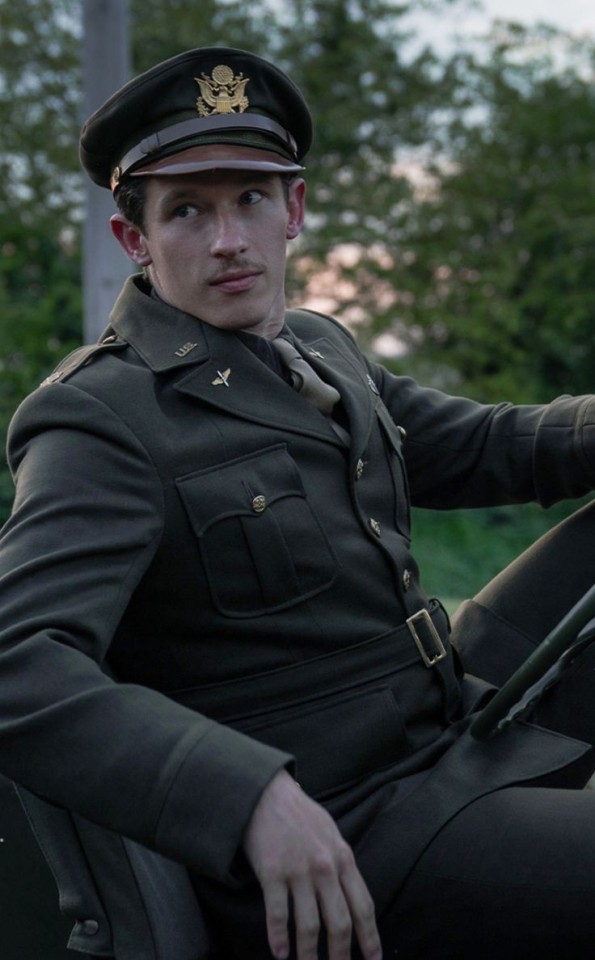
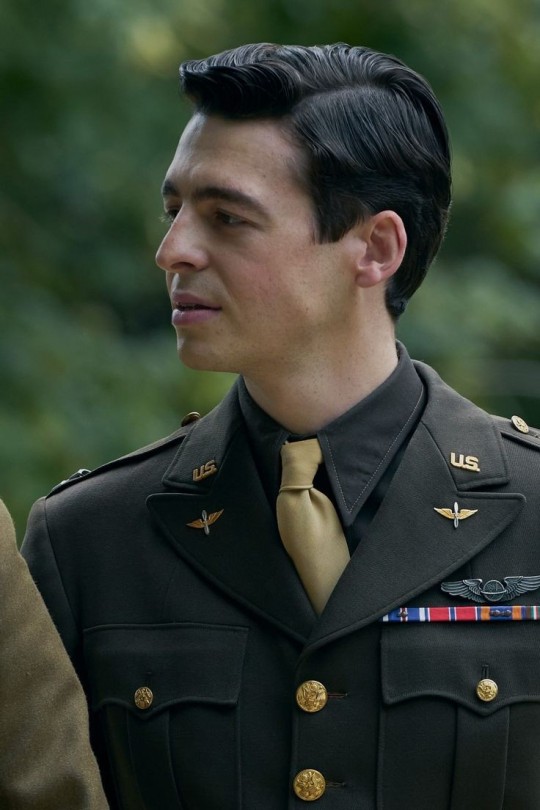
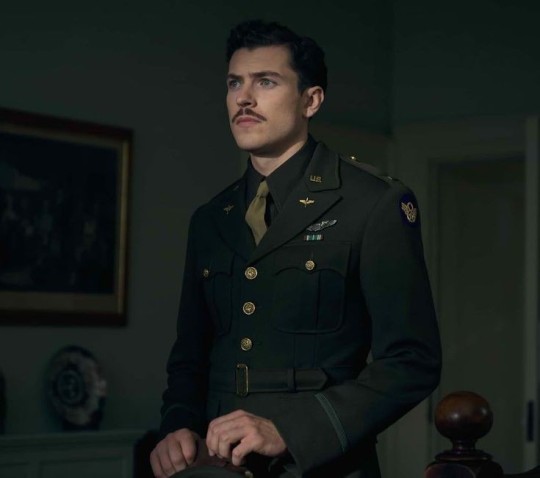
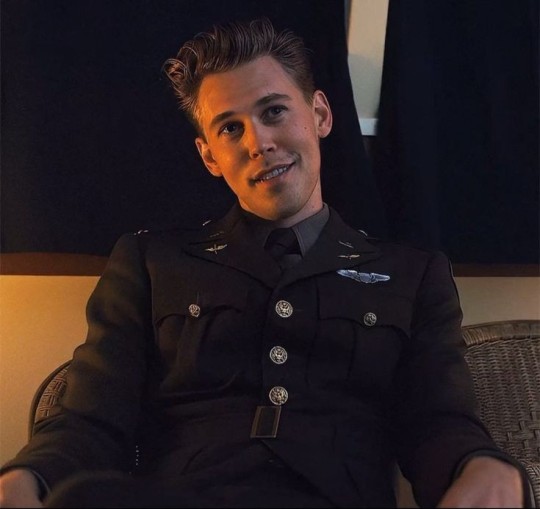
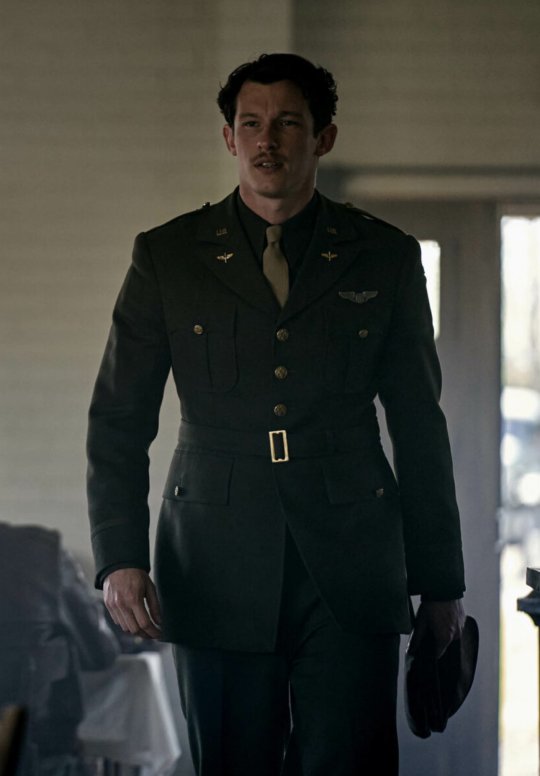
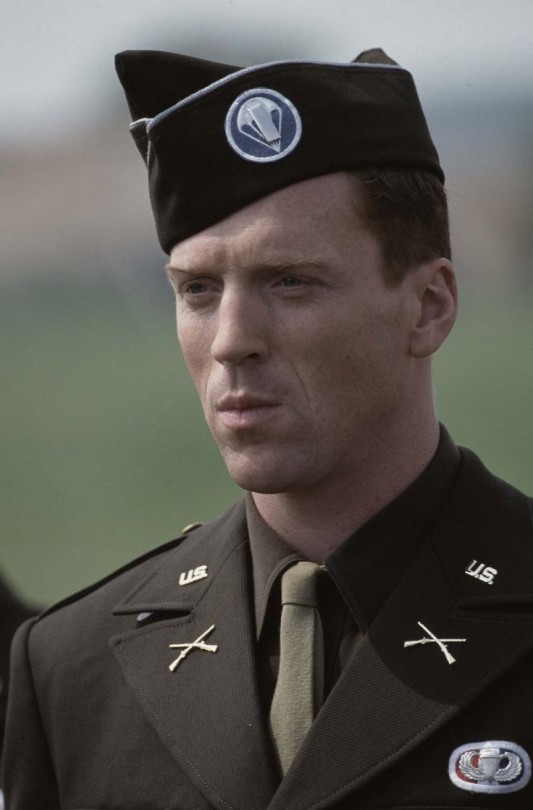
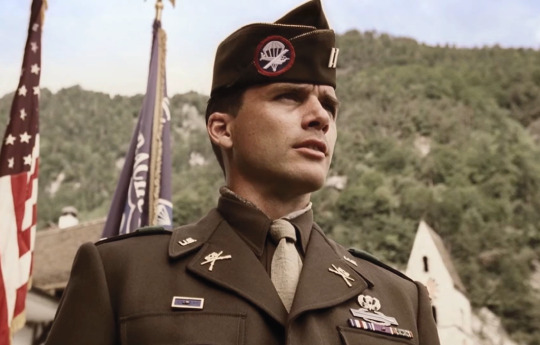

#when they're in their service uniform >>>>>>#i couldn't find a good picture of basilone in the pacific T_T#band of brothers#masters of the air#hbo war#apple tv#bucky egan#buck cleven#rosie rosenthal#ronald speirs#dick winters#lewis nixon#richard winters#john egan#gale cleven#robert rosenthal#tetrapost bob#tetrapost mota#callum turner#austin butler#nate mann#anthony boyle#damian lewis#ron livingston#matthew lewis
312 notes
·
View notes
Text
who else is thinking a lot of thoughts
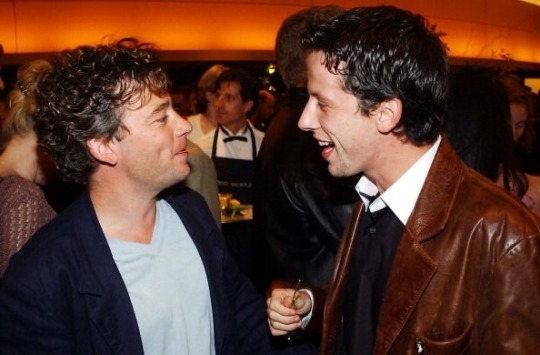








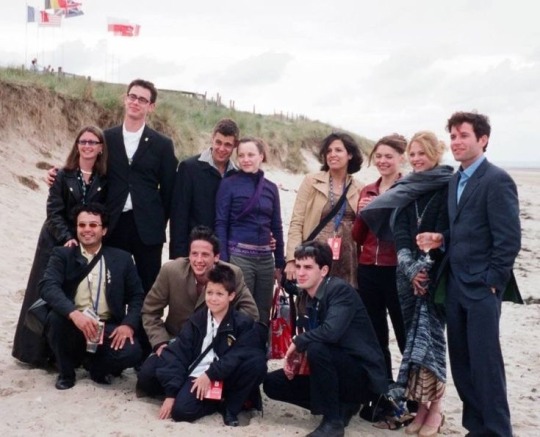
#band of brothers#ross mccall#shane taylor#matthew settle#kirk acevedo#ron livingston#frank john hughes#rick gomez#eion bailey#michael cudlitz#dexter fletcher#photo credits to pinterest lol
186 notes
·
View notes
Text
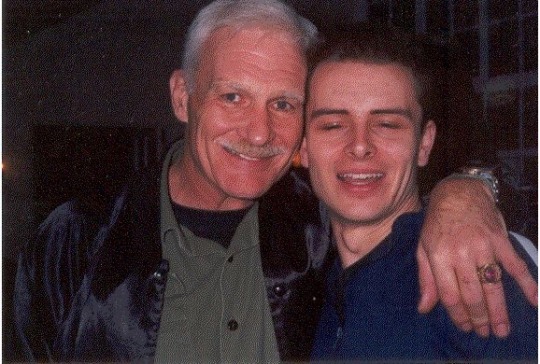


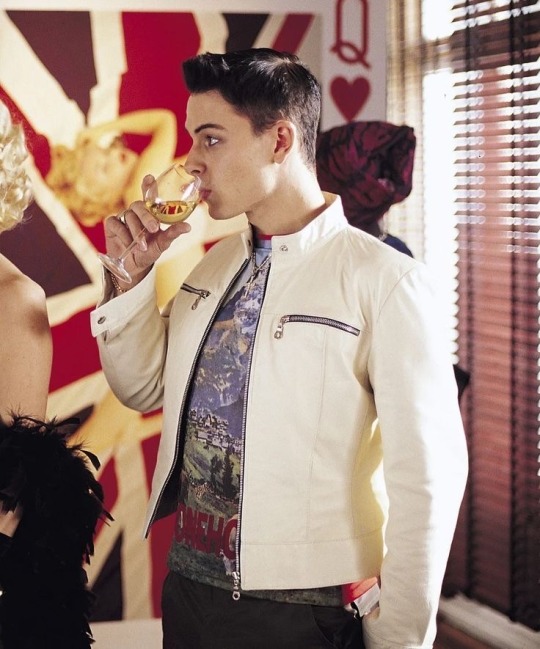
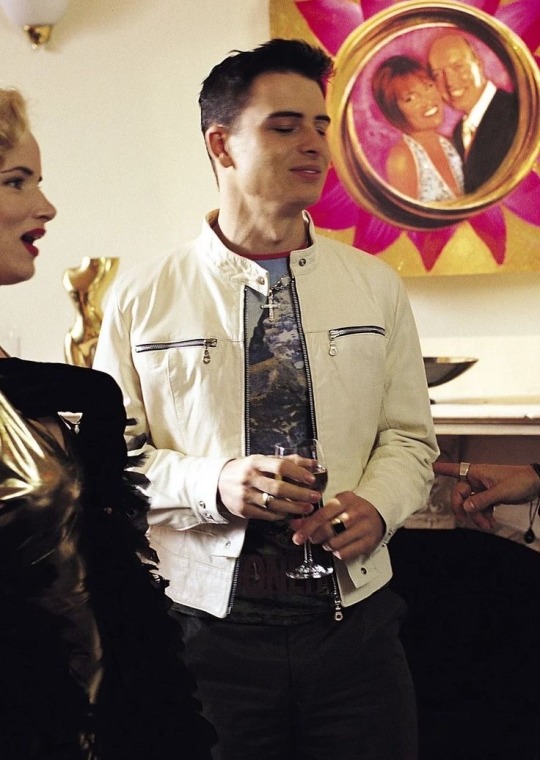

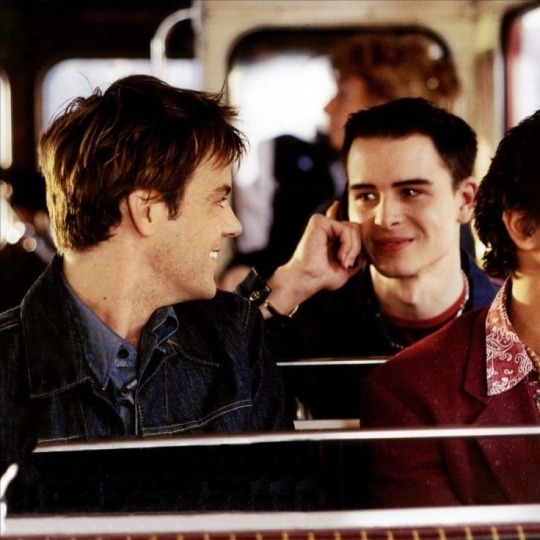
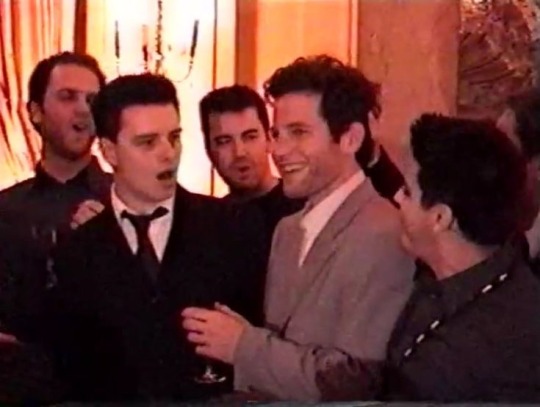

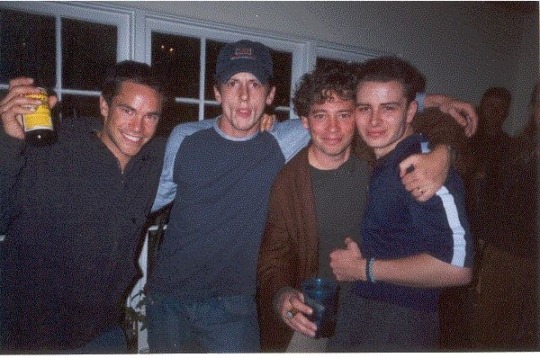
srry but he (and them) is everything to me oh my god
#shane taylor#eion bailey#donnie wahlberg#kirk acevedo#ron livingston#peter youngblood hills#ross mccall#matthew settle#dexter fletcher#johnny martin#ronald speirs#joseph liebgott#shifty powers#dan lewis#joe toye#joe liebgott#joseph toye#carwood lipton#david webster#david kenyon webster#doc roe#eugene roe#easy company#paratroopers#band of brothers hbo#band of brothers#sorry i love him
359 notes
·
View notes
Text
Spend your Saturday with us, talking to the Oracle!
Sit back, relax, and have a goss with @bitch-butter and I. Xoxo.
#personal#my podcast#rami malek#ross mccall#joe mazzello#matthew settle#donnie wahlberg#shane taylor#damian lewis#ron livingston#camp podwall#its a giggle and a half#Spotify#matthew leitch#eion bailey#peter youngblood hills
11 notes
·
View notes
Text


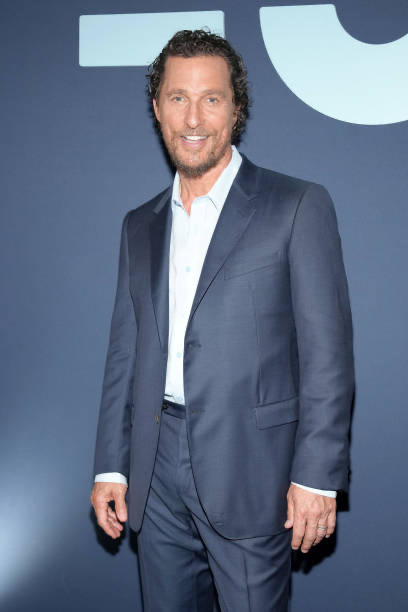

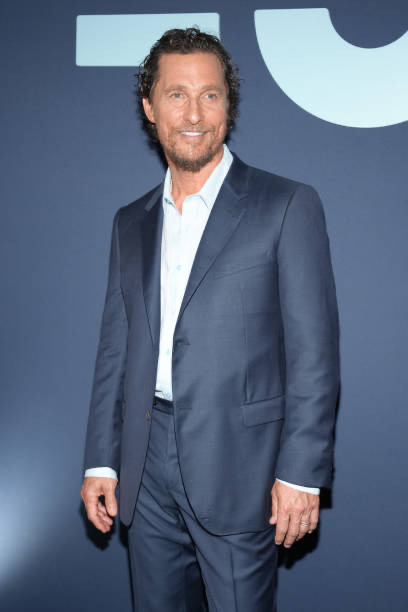


Levi McConaughey, Matthew McConaughey, Livingston McConaughey, Camila Alves McConaughey and Vida McConaughey attend the 2024 Mack, Jack & McConaughey Gala
#matthew mcconaughey#camila alves#celeb family#Levi mcconaughey#vida mcconaughey#Livingston mcconaughey
7 notes
·
View notes
Photo



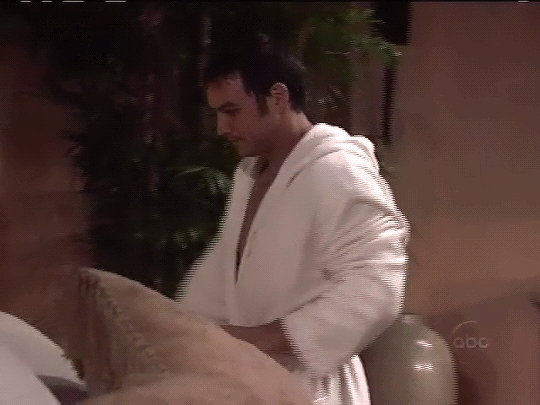


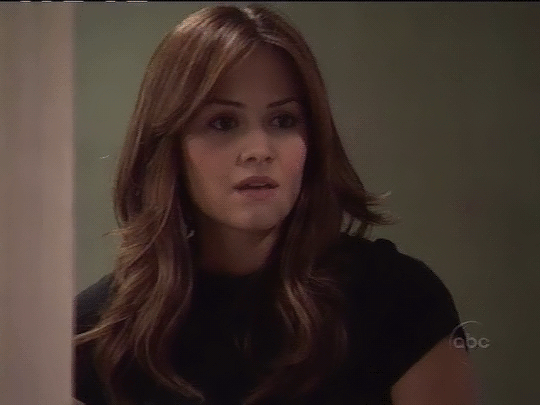

emily found nikolas and courtney together in the bahamas 08-17-2005
#emily quartermaine#nikolas cassadine#courtney matthews#nathalia livingston#tyler christopher#alicia leigh willis#general hospital#gh#generalhospitaledit#ghedit#spencer's parents were scandalous lmao#i remember watching this as a child omg#i was a journey fan but i liked nico lol#my gifs
27 notes
·
View notes
Text
Are Matthew McConaughey and Woody Harrelson Brothers?
Matthew McConaughey & Woody Harrelson might be bros? Like IRL bros? Heheh...
So the first hint would be their last names… unless you assumed they came from different fathers or their father changed his name. Most likely, two different fathers, so at best, half brothers.
No, Matthew McConaughey and Woody Harrelson are not brothers. They are both accomplished actors who have worked together on projects such as the television series “True Detective,” where they played the…

View On WordPress
#levi alves mcconaughey#livingston alves mcconaughey#makani ravello harrelson#mat mcconaughey#matthew mcconaughey#matthew mcconaughey dazed and confused#mcconaughey#woody harrelson#woody harrelson movies#woody harrelson new movie
1 note
·
View note
Text
Band of Brothers Ages: IRL vs. Actors
Did you know that according to a 1947 study, almost half the men who served in WWII were still under age 26 by the end of the war?
What this is : A (very long) post comparing the ages of the actors in Band of Brothers vs. the IRL figures they are portraying.
Background: Did I need to do this? No. Did anyone ask for this? Also no. Did I do it anyway? Yes.
Disclaimers: This is SUPER approximate for the most part. I based IRL ages off of D-Day unless otherwise noted, and actor ages off of January 1, 2000, the year filming took place (the latter is where the most variation will be because I didn't try to figure out what month filming started). I also didn't fact-check birthdays beyond googling. Most are sourced from the Band of Brothers and Military Wikis on fandom.com, Wikipedia, and IMDb.
I broke them up into rough categories, which are, again, approximate. I know I often forget how young the real life people were here, and this was a good reminder of that. I also found it interesting to see which actors were actually younger than their roles!
Check it all out under the cut ⬇��
~10+ years older
Dale Dye (55) as Col. Robert F. Sink (39) (~16 years)
Michael Cudlitz (35) as Denver "Bull" Randleman (23) (~12)
Marc Warren (32) as Albert Blithe (20) (~12)
Rocky Marshall (33) as Earl J. McClung (21) (~12)
Frank John Hughes (32) as William J. Guarnere (21) (~11)
Neal McDonough (33) as Lynn D. (Buck) Compton (22) (~11)
Dexter Fletcher (33) as John W. Martin (22) (~11)
~5+ years older
Simon Schatzberger (32) as Joseph A. Lesniewski (23) (~9)
Richard Speight Jr. (30) Warren H. (Skip) Muck (22) (~8)
Jason O'Mara (30) as Thomas Meehan (22) (~8)
Ron Livingston (32) as Lewis Nixon (25) (~7)
Donnie Wahlberg (30) as C. Carwood Lipton (24) (~6)
Matthew Settle (30) as Ronald C. Speirs (24) (~6)
Nolan Hemmings (28) as Charles E. "Chuck" Grant (22) (~6)
Douglas Spain (25) as Antonio C. Garcia (19) (~6)
George Calil (26) as James H. "Mo" Alley Jr. (21) (~5)
Rick Gomez (27) as George Luz (22) (~5 year)
Scott Grimes (28) as Donald G. Malarkey (23) (~5)
Stephen Graham (26) as Myron "Mike" Ranney (21) (~5)
~less than 5 years older
Shane Taylor (25) as Eugene G. Roe (21) (~4)
Tim Matthews (23) as Alex M. Penkala Jr. (19) (~4)
Matthew Leitch (24) as Floyd M. "Tab" Talbert (20) (~4)
Peter O'Meara (30) as Norman S. Dike Jr. (26) (~4)
Tom Hardy (22) as John A. Janovec (18) (~4)
Rick Warden (28) as Harry F. Welsh (25) (~3)
Kirk Acevedo (28) as Joseph D. Toye (25) (~3)
Eion Bailey (25) as David Kenyon Webster (22) (~3)
Craig Heaney (26) as Roy W. Cobb (29) (~3)
Damian Lewis (28) as Richard D. Winters (26) (~2)
Robin Laing as Edward J. "Babe" Heffron (~2, 21/23)
Ben Caplan (26) as Walter S. "Smokey" Gordon Jr. (24) (~2)
David Schwimmer (32) as Herbert M. Sobel (33) (~1 year)
Michael Fassbender (22) as Burton P. "Pat" Christenson (21) (~1)
Colin Hanks (22) as Lt. Henry Jones (21) (~1) (age around Bastogne)
Bart Ruspoli (23) as Edward J. Tipper (22) (~1)
~Same age
Peter Youngblood Hills as Darrell C. "Shifty" Powers (21)
Mark Huberman as Lester "Les" Hashey (19)
Younger
Lucie Jeanne (23) as Renée Lemaire (30) (age around Bastogne) (~7)
Ross McCall (23) as Joseph D. Liebgott (29) (~6)
Simon Pegg (29) as William S. Evans (~33) (~4)
Philip Barantini (19) as Wayne A. "Skinny" Sisk (22) (~3)
James Madio (24) as Frank J. Perconte (27) (~3)
Stephen McCole (25) as Frederick "Moose" Heyliger (27) (~2)
Matt Hickey (~16) as Patrick S. O'Keefe (18) (~2)
Incomplete/not found
Phil McKee as Maj. Robert L. Strayer (34)
Rene L. Moreno as Joseph Ramirez (30)
Doug Allen as Alton M. More (24)
David Nicolle as Lt. Thomas A. Peacock (24)
Rebecca Okot as Anna (Augusta Chiwy) (24) (age around Bastogne)
Alex Sabga-Brady as Francis J. Mellet (23)
Mark Lawrence as William H. Dukeman Jr. (22)
Nicholas Aaron as Robert E. (Popeye) Wynn (22)
Peter McCabe as Donald B. Hoobler (21)
Marcos D'Cruze as Joseph P. Domingus (not found)
#ty mercurygray for that sweet sweet jstor access#band of brothers#uhh one more disclaimer it's entirely possible that i mistyped stuff here and that i switched ages/etc.#i did try to proofread though!#anyway. i apologize if anyone has already done this.#shoshi.txt#sort of#it's also very possible that i spent too much time online today
78 notes
·
View notes
Text
ron livingston getting asked by customs to put away his video diary camera and matthew settle going “oh he didn’t realize he was recording” even though the camera was right up in his face in front of the lady is SO nixon and speirs coded i can’t even
105 notes
·
View notes
Note
Merc, what kind of Historical Military Man gets the wheels turning for you? What are the markers of 'Oh, that one, that one is now mine'?
Nat, I'm going to be honest, this question provoked something of an existential crisis. so I went back through, like, 20 years of fandom favorites to see if there's a pattern.
Spoiler: there isn't, apart from a perennial need to be different. This is kind of long .
2001 (ish) -
Lord of the Rings is coming out, and you are either a Legolas or Aragorn girl. I am deep in my 'not like the other girls' phase and decide Boromir is actually the superior choice here. (This leads me to watch A LOT of period dramas that are probably not appropriate for for me at this age, including Clarissa and Lady Chatterley's Lover.) It also leads me to the Sharpe books, which are great and awesome. Richard Sharpe doesn't necessarily do anything for me as a character, but that gets me into Hornblower, which gets me into the Aubreyad, which leads me to read a lot about the Napoleonic Wars in high school. Cliff-diving into a different historical period is now something I do every single summer.
I also spend about 5 years (2008-2013) writing a 225,000 word fanfic in which Boromir doesn't die.
2010-2015
Matthew Crawley (Dan Stevens) is really only in the army a brief while but who can say no to the blue eyes and the absolute vibe he has going with Mary?
During the Downton phase I decide to raid the library for other period dramas, again, and watch The Forsyte Saga. Soames Forsyte is not a man you love, but Damian Lewis has A Face and I know he was on Band of Brothers, which the library perennially never has a copy of.
2011
I finally watch Band of Brothers in its entirety my senior year of college and am a little disappointed I appear to be missing large parts of the story. (Future rewatches will explain that this is actually a feature of the show, not a bug.) My recollections of this are hazy, but I'm fairly certain my favorite character the first time I watched this was Lewis Nixon (Ron Livingston). He's dark-haired, he's funny, he's an absolute mess with a trust fund. Dick Winters (Damian Lewis) also has one hell of a face. He's a red-head, he's in charge of everyone else, he doesn't say much, and he is tall. I know there must be fic for this show but am also very, very sure it is shippy in a direction I do not want to read, so I do not go looking for it.
TURN - 2014-2017
Ben Tallmadge (Seth Numrich) is the guy to watch on TURN: he's a lieutenant, he's tall, he struggles with rules, but the entire fandom is also crazy about him and the leading queen bee in the OC end of that fandom is a real pain about it, so I decide I will not be writing for him no matter what it costs me to hold off admitting I want to. However, in the next episode we meet his best friend, Caleb Brewster (Daniel Henshall) who is short, bearded, dark-haired and chaotic. The moment he comes onscreen I love him. Sadly, no one is reading fic for him and this project is abandoned.
In Season 3, we meet the Marquis de Lafayette. Historical Lafayette is a tall, awkward redhead in need of a father figure who makes up for war experience with boundless enthusiasm. His letters home are adorable. Show Lafayette (Ben Wiles) is tall and enthusiastic. I love him anyway and I make it everyone's problem for, like, a year.
2016-2017 - Mercy Street
Henry Hopkins (Luke Macfarlane) is a military chaplain in a hotel-turned Union hospital in Alexandria, Virginia. He's tall, he's a little tortured, and he has a knack for putting others first. Wrestling with some past choices, his romance with Emma Green, the privileged daughter of the family who owned the hotel, is sweet and full of pining. I write so much fix-it fic for them it's not even funny. (I love this show because the female characters I love come pre-installed. Please watch this.)
2016 - Dunkirk
I see this movie three times in theaters and love it more each time. Collins (Jack Lowden) is a blonde RAF flyboy with a very adorable face. (Tom Glynn Carney is also a face I like but he's on a backburner for a bit.) I write a lot of fic about it and affectionately refer to this as my first Planes Go Zoom phase.
2020
Two weeks into the pandemic I decide rewatching Band of Brothers is a good idea and buy the book and the DVD set from my local secondhand bookshop like I am doing a drug deal in a parking lot. Two weeks after that I am writing a fanfic for Dick Winters (Damian Lewis) because I am a loon who likes men in charge and painfully slow burns.
2021
Still in the middle of a pandemic I decide to watch The Pacific, because I make good decisions, apparently. Hoosier Smith (Jacob Pitts) is a taciturn, wise-cracking friend of Leckie's who is joked about as being the pretty one. He is.
Andrew Haldane (Scott Gibson) is quiet, unassuming, and in charge, and played college football for Bowdoin. Very dad energy. Extremely charming. Dead in three episodes as history intended. Fix-it fic incoming.
2022
Top Gun Maverick comes out. Jake "Hangman" Seresin (played by Glen Powell, who I loved in Hidden Figures and The Guernsey Literary Potato Peel Pie Society) has a jawline you could cut something with and an attitude. My friends think I am mental. Second Planes Go Zoom phase coupled with Devotion, which comes out shortly after.
SAS Rogue Heroes comes out. I have been really looking forward to seeing Tom Glynn Carney in something else and he delivers. Mike Sadler is blond, extremely good at his job, not capable of suffering fools, and far too attractive for the desert.
2024
We do not even make it out of trailer season before I realize I still have a Thing (TM) for Callum Turner's face, which I have known since he was Theseus Scamander in Fantastic Beasts. Watching The Boys in the Boat before this all starts doesn't help - he has regrettably blond hair but thighs for days and shoulders you could hang the universe on. John "Bucky" Egan, is tall, dark-haired, incredibly generous spirited and nominally in charge. I want all of it. The rest of the fandom does too. I try to make peace with that and write anyway. Third Planes Go Zoom phase.
21 notes
·
View notes
Note
List 5 things that make you happy, then put this in the askbox for the last 10 people who reblogged something from you! get to know your mutuals and followers ☆



@b00ks1ut @themysciraprincess ALKJFDKL:DNF THANK YOU FOR THE ASKS!!!!!!!! Apologies for taking ten million years to answer 😂😅 Alright 15 things I like plus 5 things I like about myself lets GO
My tumblr moots!!
my fur baby Niki
Aerial Lyra
Chocolate
White monsters
iced coffee
sharks
plushies
Shark plushies
Waking up, seeing I don't have to get up for a hot minute, then going back to sleep
my mom's homemade spaghetti
making things for my friends and family
Seeing Daniel Ricciardo have a good race weekend
the color yellow
The 2001 award-winning miniseries Band of Brothers created by Tom Hanks and Steven Spielberg, staring Damien Lewis, Ron Livingston, Matthew Settle, Rick Warden, Donnie Whalberg, Rick Gomez, Frank John Hughes, Kirk Acevedo, Ross McCall, Peter Yo-
Five things I like about me
My legs, I know it's kinda silly but it's the only part of my body I'm not utterly disgusted by lmao
my compassion for others
my hair that's always wild colors
How I love to encourage and motivate others
My tattoo, it's a watercolor rose and says "Jesus I Trust in You" in Polish!
Thank you all again for the asks!! Love you guys to the moon and back 🩷💕✨💗
7 notes
·
View notes
Text
As this film will be getting much more coverage during awards season, I thought that this analysis and reflection of Leonard Bernstein's queer sexuality, and how it was rendered in the film, was worth reading.
Certain emphases in the article below are mine. As an East-Coast American, in many ways, I feel like Leonard Bernstein is musical family; that a Hollywood-driven film about him would leave out important details of the context of his sexual and emotional life is... to be expected in the Hollywood West.
****
The film celebrates Leonard Bernstein’s musical duality, but fails to seriously engage with his bisexuality.
By Jennie Livingston
There’s a heartbreaking scene in Bradley Cooper’s “Maestro,” about the marriage of the composer and conductor Leonard Bernstein (Cooper) to the actress Felicia Montealegre (Carey Mulligan), in which, as the couple argue in the bedroom of their Upper West Side apartment, Macy’s parade inflatables glide past the windows. A giant Snoopy echoes a Snoopy we saw in a family scene; it also gestures at the awkward gulf between Bernstein’s private and public lives, as if the musician himself were yet another helium-propelled icon from the Thanksgiving pantheon. Montealegre’s accusation, “Your truth is a [expletive] lie!” nails Bernstein’s privilege, condemning the habits and appetites he expects his family to tolerate and support.
The film gets right so much of who Bernstein was, allowing us to take in how he was, all at once, ahead of his time, a victim of his time, a gay man, a bisexual, a father, a nonconformist, a narcissist. “Maestro” is full of heart and craft, with riveting lead performances. It’s a film about a musician that doesn’t exaggerate or glorify the creative process, or suggest artists are either superhuman or subhuman.
The film drops you into the heart of creation so that you feel the excitement of the new, particularly in eras (the 1940s through the ’70s) in which Leonard Bernstein revolutionized how the public experienced classical music. As the decades shift, so does what we see: Early scenes use an aspect ratio (4:3) and color world (black and white) from the ’40s; then the film almost imperceptibly brings in color, before finally stretching the frame out to widescreen — all without banging you over the head with its cinematic cleverness. The cinematographer, Matthew Libatique, deserves special applause for his command of light, space and movement. An opening scene in which the young Bernstein leaps onto a bed, slaps his partner’s butt like a timpani, then runs right into Carnegie Hall in his bathrobe and boxers, is as thrilling as any time-compression or dream sequence I can name.
Although it’s clear that Cooper’s directorial hand is nothing less than breathtaking, the film becomes increasingly disquieting. In the first third of the film, the script sets up an intoxicating premise: a queer Jewish man inhabiting the already-antisemitic world of classical music falls in love with a woman. It can happen. It particularly could happen in a world in which gay artists were always in danger of being exposed and ejected from the institutions they depended on. In the ’40s and ’50s, when Bernstein and Montealegre met and married, psychiatry still considered homosexuality a disorder to be treated or cured. (A note on my language describing Bernstein’s sexuality: In an early letter, Montealegre tells Bernstein “you are a homosexual and may never change.” More recently, his daughter Jamie has referred to him alternately as gay and bisexual.)
Early on, the script follows Bernstein from dating the clarinetist David Oppenheim (the man in bed in that opening scene, played by Matt Bomer) to his courtship with Montealegre, an actress with high cheekbones and an intelligence and warmth that are just as sharply defined. One day Lenny’s walking alone in Central Park and runs into Oppenheim, who’s strolling with his wife, Ellen Adler (Kate Eastman), and baby in tow. By now Bernstein’s also married. Addressing the child, Bernstein jokes that he has slept with both of her parents! And adds with a kind of wild glee, “but I’m reining it in.” The mother and child go one way; Bernstein and Oppenheim head downtown. Soon Oppenheim is clasping Bernstein’s face, and they are both feeling, regretting, reliving what couldn’t have been.
If only the film itself weren’t an exercise in “reining in” Bernstein’s sexuality. Granted, the movie primarily concerns the relationship between Montealegre and Bernstein. It’s about two people creating a family, a family that has issues, partly because the wife spends years tolerating, resisting, commenting on, accepting and suffering from her husband’s dualities. But about a third of the way in, the queer characters all but fade out. They’re there as a light visual presence, but not as people with stories and interior lives.
After Oppenheim and Bernstein’s intimate stroll, Lenny and his lovers are reduced (in Montealegre’s eyes) to a series of obstacles to respectability, and (in the audience’s eyes) to a series of outfits, mannerisms and even clichés, like a coke-fueled party during which Bernstein talks on the phone to his daughter Jamie. Did some gay men in the ’70s skate on the surface of drugs and anonymous sex? Yes, and if the film tells me Bernstein was there to witness and experience it, I believe it. What I don’t believe is that he never experienced relationships with men built on conversation, intellectual intimacies and sustained physical contact. It wouldn’t have taken much — one or two scenes — to suggest that the gay relationships that Bernstein cultivated were in fact love affairs. That may have been worth noting, including in the service of telling the story of the marriage.
“Heterosexuals have never known what to do with queer people, if they think of their existence at all,” Carmen Maria Machado writes, in a memoir tracing the invisibility of certain narratives. I don’t want to believe that the director and his co-writer are incapable of writing well-rounded gay characters, but paradoxically, the failure to render Bernstein’s male lovers as three-dimensional people distracts from the central couple’s romance. I longed for more insight into the nuances of Bernstein and Montealegre’s conundrum, and details of his queer life could have provided it. Flattening Bernstein’s gay relationships to a series of knowing glances and brief encounters seemed to underline the main couple’s essential heterosexuality, rather than emphasizing their relationship’s complexity.
Because, in life, Bernstein kept seeing men — and not only at the events the film allows us to briefly glimpse. Ultimately, he left Montealegre for a younger man, Tom Cothran (Gideon Glick), who worked in classical radio. If included, this risky decision could have been a great turning point in the film. Scenes of Bernstein attending the dying Montealegre are moving; they could have been more meaningful if we had understood the drama and sacrifice behind his loving presence at her bedside. He didn’t just drop out of one or two coke-fueled soirees; he left a relationship.
The film ends with Montealegre’s death and suggests Bernstein never recovered from the loss. In life, after his wife’s death, Bernstein reconnected with Cothran, as a friend. Soon after, Cothran himself died, of AIDS, the plague that claimed the lives of so many men of his and Bernstein’s generations. It must have been a cavalcade of griefs for Bernstein; it must have been so complex for this artist to have struggled — with his desire to honor his desires, with his realization that the world was becoming increasingly open to “out” queer artists as viable public figures — and with the divisions between his queer worlds and his family. I wonder if Bernstein longed for Montealegre more acutely in the 1980s. Perhaps, together, they could have absorbed the horror of the AIDS pandemic.
The decision to leave out AIDS feels as if the filmmakers simply don’t know, or mark as significant, what happened in the world during the years between Montealegre’s death in 1978 and Bernstein’s own death in 1990. What viewers get instead is a near-final sequence of Bernstein grinding with his young conducting student to Tears for Fears’s “Shout,” then wildly dancing on his own. That these flashes of ecstasy occur in a room full of other young men, many of whom will die soon, is an odd understatement from a film obsessed with the passage of time.
Jennie Livingston directed and produced the award-winning documentary “Paris Is Burning,” and the shorts “Who’s the Top?” “Through the Ice” and “Hotheads.” Other work includes directing for the TV series “Pose” and creating an original projection for Elton John’s show. Livingston is currently at work on a nonfiction feature film, “Earth Camp One.”
15 notes
·
View notes
Note
rec the horror books pls
YA
His Hideous Heart (anthology) ed. by Dahlia Adler
*Camp Mirror Lake by Kalynn Bayron (Slasher)
Not Good For Maidens by Tori Bovalino
My Dearest Darkest by Kayla Cottingham
*This Delicious Death by Kayla Cottingham
*The Pledge by Cale Dietrich (Slasher)
The Taking of Jake Livingston by Ryan Douglass
A Lesson in Vengeance by Victoria Lee
Sawkill Girls by Claire Legrand
Extasia by Claire Legrand
Rules for Vanishing by Kate Alice Marshall
The City Beautiful by Aden Polydoros
Wilder Girls by Rory Power
Bleeding Earth by Kaitlin Ward
The River Has Teeth by Erica Waters
*The Restless Dark by Erica Waters
Hell Followed With Us by Andrew Joseph White
Adult
Our Wives Under the Sea by Julia Armfield
Lost Souls by Poppy Z. Brite
The Monster of Elendhaven by Jennifer Giesbrecht
Into the Drowning Deep by Mira Grant
The Drowning Girl by Caitlín R. Kiernan
What Moves the Dead by T. Kingfisher
The Blade Between by Sam J. Miller (Cosmic) (Bks)
The Lights by Carrie Pack
The Worm and His Kings by Hailey Piper (Cosmic)
Queen of Teeth by Hailey Piper (Body)
The Luminous Dead by Caitlin Starling
Yellow Jessamine by Caitlin Starling
The Wicked and the Willing by Lianyu Tan
Elegy for the Undead by Matthew Vesely
Catfish Lullaby by AC Wise (Cosmic)
209 notes
·
View notes
Photo

Calamity!, the board game of insurance underwriting ups and downs, comically tasteless box art signed ”Matthews,” featured in Games Workshop’s 1983 catalogue alongside Quirks and 1e Warhammer. Composer Andrew Lloyd Webber is credited as designer, with help from Derek Carver and Ian Livingstone; published as a collaboration between Lloyd Webber’s The Really Useful Company Limited and GW. The game board physically resembles Monopoly, as many new designers’ first efforts do, but the game play is significantly different.
(Because strange women lying in ponds is a firm foundation for a modern government, the composer was elevated to the title Baron Lloyd-Webber to honor his accomplishments, after which he occasionally showed up to vote with the Conservatives in the House of Lords before retiring from politics and more recently renouncing the party for its handling of the pandemic.)
#Calamity!#Andrew Lloyd Webber#Games Workshop#board game#tw suicide#1980s#GW#The Really Useful Company Limited#gratuitous Monty Python reference#UK politics#insurance
179 notes
·
View notes
Text
booklist for my anthropology class about race in america
Caste: the origins of our discontents, by Isabel Wilkerson
White Bound: Nationalists, Antiracists, and the shared meanings of race, by Matthew Hughey
The Fire Next Time, by James Baldwin
There, There, by Tommy Orange
Tours That Bind: diaspora, pilgramage, & Israeli birthright tourism, by Shaul Kelner
Americanah, by Chimamanda Ngozi Adiche
Interior Chinatown, by Charles Yu
more honorary mentions that didn't make the official cut in order to not swamp us in work (but i want to check out later)
How Jews Became White Folks and What That Says About Race In America, by Karen Brodkin
Making Monsters: the uncanny power of dehumanization, by David Livingstone Smith
The Souls of Black Folk, by W. E. B. Du Bois
In the Eye of the Wild, by Nastassja Martin
Their Eyes Were Watching God, by Zora Neale Hurston
Life Beside Itself, by Lisa Stevenson
White Trash, by Nancy Isenberg
How Real is Race? a sourcebook on race, culture, and biology, by C. C. Mukhopadhyay, R. Henze & Y. T. Moses
44 notes
·
View notes
Text
The Real National Treasure (2024)
(Remember to follow me I am trying to start a blog for my theory and need followers, obviously haha).
Have you ever watched the National Treasure movie? It follows a treasure hunter named Benjamin Franklin Gates, whose grandfather reveals a hidden treasure with clues on the back of the Declaration of Independence. What if I told you that this isn't too far from the truth? That there are clues written on the Declaration of Independence that did lead to a map describing ancient artifacts. Sounds far-fetched. It happens that I developed a theory called Hidden Parable Theory, utilizing a form of numerology based on the golden ratio. This theory not only identifies a code on the Declaration of Independence but also on the United States Constitution and the Emancipation Proclamation.

This makes sense since if you think logically, if there was a code on the Declaration of Independence, which there is, there could be similar ones on other foundational American documents. So, let's dive into my theory.
In Hidden Parable Theory employs numerology with scientific relevance, drawing connections to passages in the Bible. A crucial link is found in the Book of Matthew, specifically in analyzing Jesus' lineage. After scrutinizing the names of the forty-two generations of Jesus, four names stand out, creating a numerical connection with biblical origins. Interestingly, these four names also relate to King David, all containing the letter 'D'.
Now, how does this connect with American governmental documents? These documents bear the signatures of the Founding Fathers, and within their names and positions, numerical codes can be found using Hidden Parable Theory. Let's consider a basic example:
On the Declaration of Independence, with 56 signatures, six names stand out: William Hooper, William Paca, William Floyd, William Whipple, William Ellery, and William Williams. Notice a coincidence? All of them have 'William' in their names. By repeating the same name six times, the Declaration of Independence emphasizes a biblical number.

The six names mentioned in the Declaration of Independence. By chance, there happens to be six variations of William on the United States Constitution, as well, and are as follows: William Blout. Hugh Williamson, William FEW, William Samual Johnson, William Livingston, and William Patterson.
This connection to biblical numbers and documents is a result of using Hidden Parable Theory. These connections trace back to two significant events in the Old Testament.
The first event ties back to the sixth day of creation, correlating the creation of man with the creation of a governmental document founded on natural rights. The second event involves the sixth commandment written by Moses as "Thou shall not kill," influencing fundamental aspects of our legal system.
Returning to the example of names related to King David and the number four, the Hidden Parable Theory uses this biblical concept to make numerical connections, highlighting symbols related to nature and a way to scale them. Because of the Bible's significance as a text written for man's salvation, anything remotely related to it is considered significant.
So, in the case of the Declaration of Independence, there is a symbol. Can you figure it out? If not, check out my book where I delve into all three documents, including the Declaration of Independence. If you're intrigued, there's more to explore about the Hidden Parable Theory in my books available on Amazon or through my social media pages (Facebook, LinkedIn, Reddit, and Tumblr).
#aesthetic#art#religious art#history#theology#religous themes#theories#theory#architecture#numerology#american government#usa news#usa#us army#united states of america#united states#america#the united states
3 notes
·
View notes